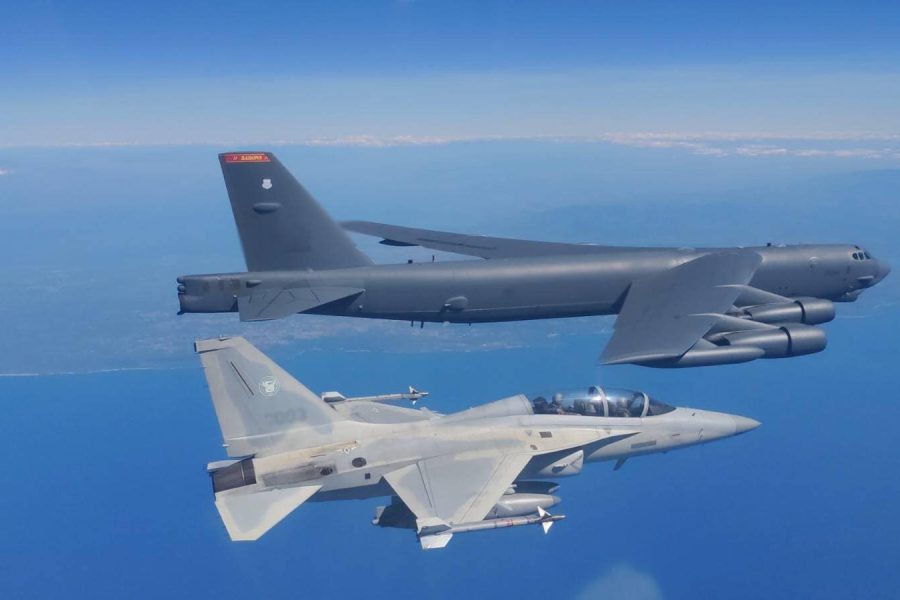A U.S. Air Force B-52 bomber flew alongside three Philippine FA-50 fighters during a patrol over the South China Sea in the Philippines’ Exclusive Economic Zone (EEZ) on Feb. 19.
The Philippine Air Force announced the patrol as part of an ongoing Maritime Cooperative Activity between the Philippines and the U.S. The U.S. Navy previously announced its participation in the activity, but the Air Force has not publicly noted the B-52’s involvement.
The South China Sea is a heavily-trafficked, heavily-contested area. International law states that the EEZ grants the Philippines exclusive rights to exploit natural resources within the 200-nautical-mile zone. China, however, claims sovereignty over much of the waters, including areas claimed by Vietnam, the Philippines, Malaysia, Brunei and Indonesia.
The People’s Liberation Army Southern Theater Command released a statement following the bomber patrol, accusing the Philippines of collaborating with outside countries “to stir up trouble in the South China Sea.”
The statement added that the PLA’s Southern Theater Command dispatched its frontline air and naval forces to closely monitor the region, emphasizing that the troops remain on high alert.
However, PAF spokesperson Col. Ma. Consuelo Castillo said in a statement that the patrol “is in no way directed towards any country and the activity is in accordance with the international rules-based order, as we were operating within our territory and within the Philippines’ EEZ,” according to local media reports.
Armed Force of the Philippines’ spokesman Col. Xerxes Trinidad added that the aerial patrol “demonstrates the commitment of both Armed Forces to enhancing interoperability and advancing regional peace and security in the Indo-Pacific.”
The B-52 that led the patrol with Philippine fighters was from the 5th Bomb Wing of Minot Air Force Base, N.D., which deployed to Anderson Air Force Base, Guam, in late January. A total of four Stratofortresses arrived in the region, in part to support Cope North 24, a multilateral air exercise involving Japan, Australia, France, South Korea, and Canada. The three-week exercise extends to the islands of Tinian and Saipan, about 120 miles north of Guam, and is set to conclude on Feb. 23.
The nuclear-capable bombers have kept a low profile in the contested South China Sea in recent years, but back in October, U.S. Indo-Pacific Command disclosed that Chinese fighter jet closed within 10 feet of a B-52 in a nighttime intercept in the region, deeming the incident “unsafe and unprofessional.”
INDOPACOM has also noted B-52 flights over the South China Sea in 2020, 2019 and 2018.
More broadly, the U.S. continues to operate in the region—earlier this month, the USS Gabrielle Giffords (LCS 10) and an MH-60S Sea Hawk from the U.S. exercised in the region with the Philippine Navy, according to INDOPACOM.
This comes even as Chinese vessels and aircraft increase their “dangerous” and “unlawful” behavior, Pentagon officials have said. U.S. President Joe Biden has stressed that Washington’s defense commitment to the Philippines is “ironclad,” and any attack on Filipino aircraft, vessels, or armed forces will invoke the Mutual Defense Treaty with the Philippines.
The Philippines’ FA-50 fighter is an upgraded version of South Korea’s supersonic T-50 trainer jet, manufactured by Korea Aerospace Industries with development support from Lockheed Martin.
